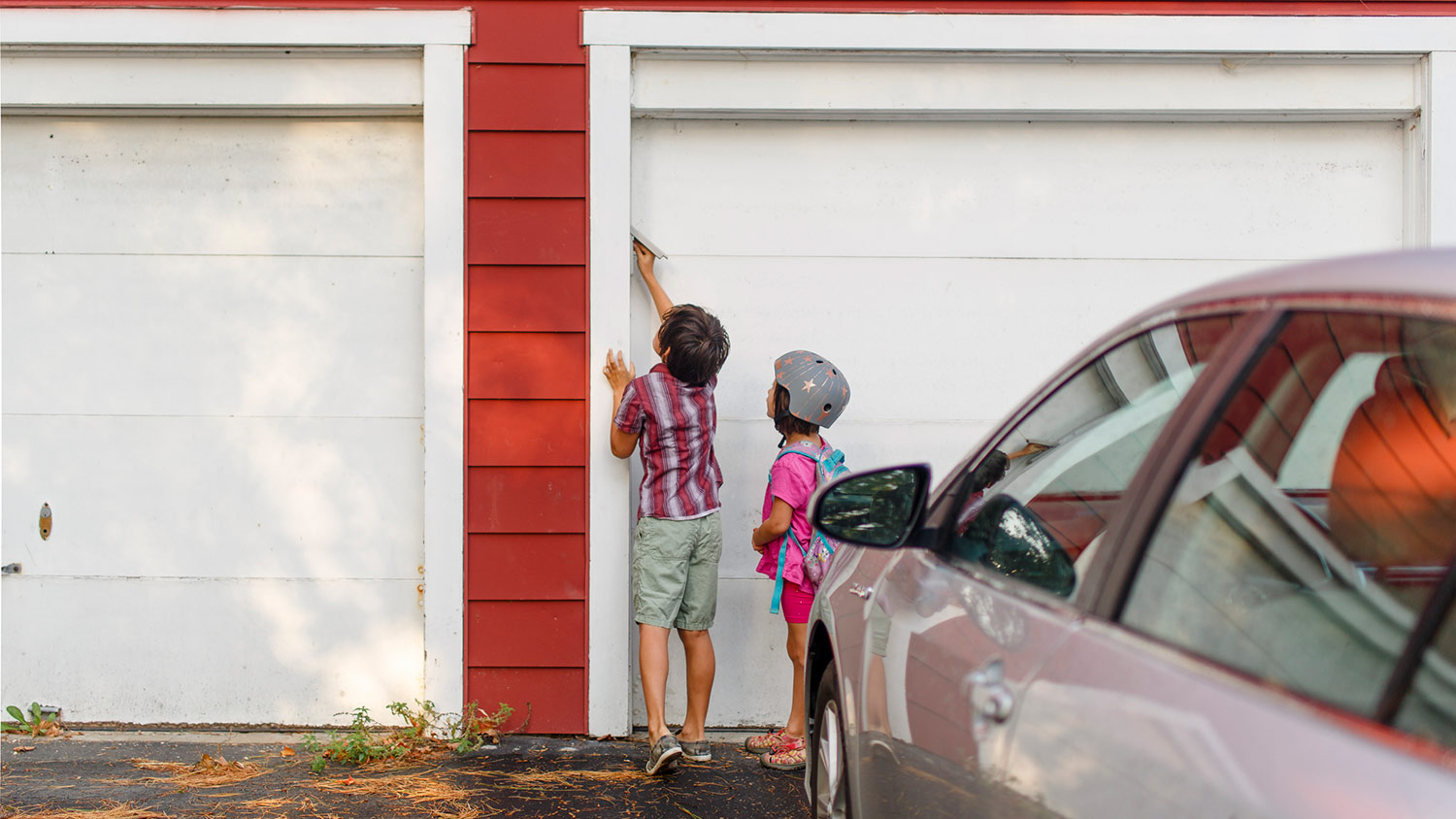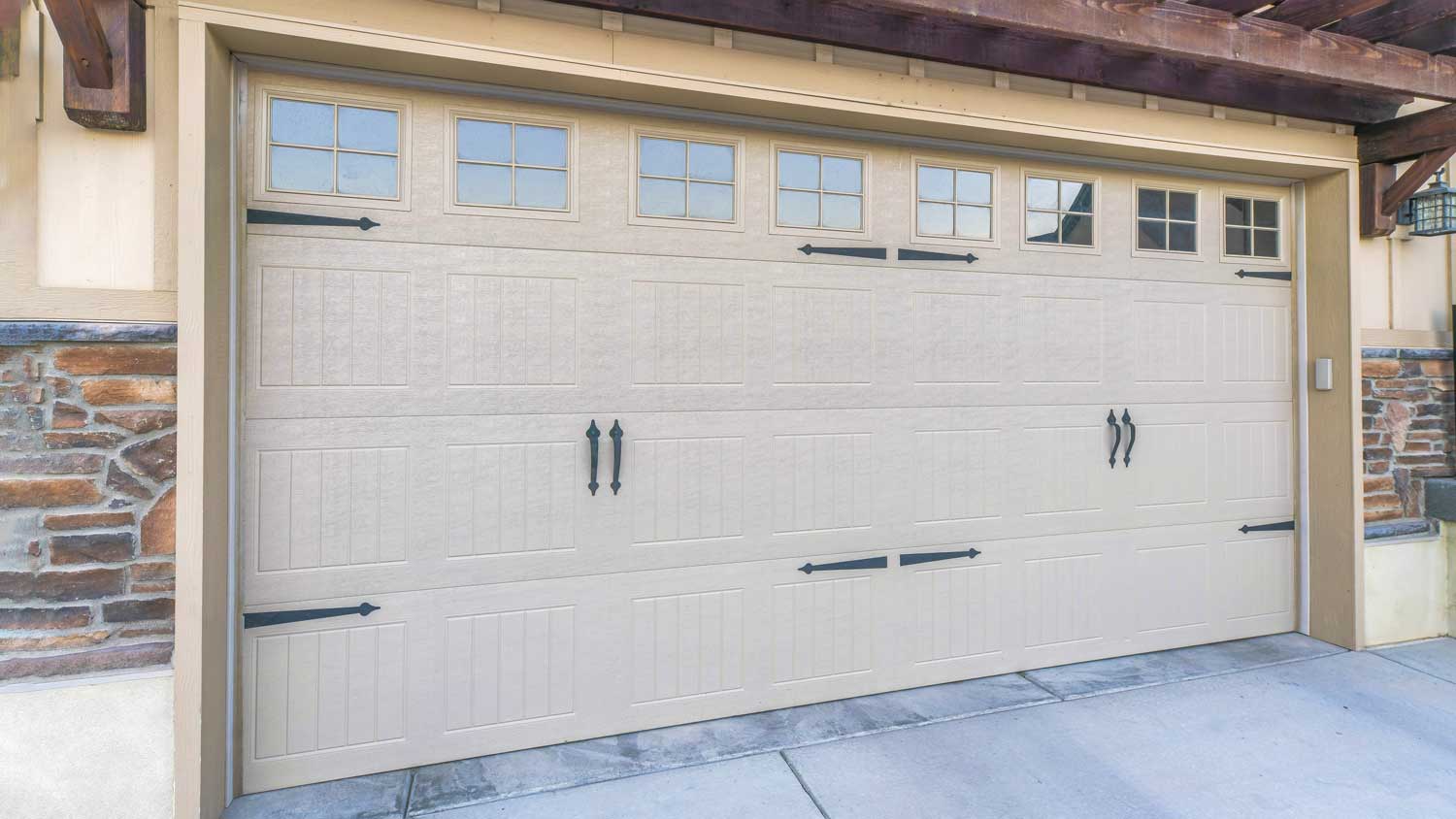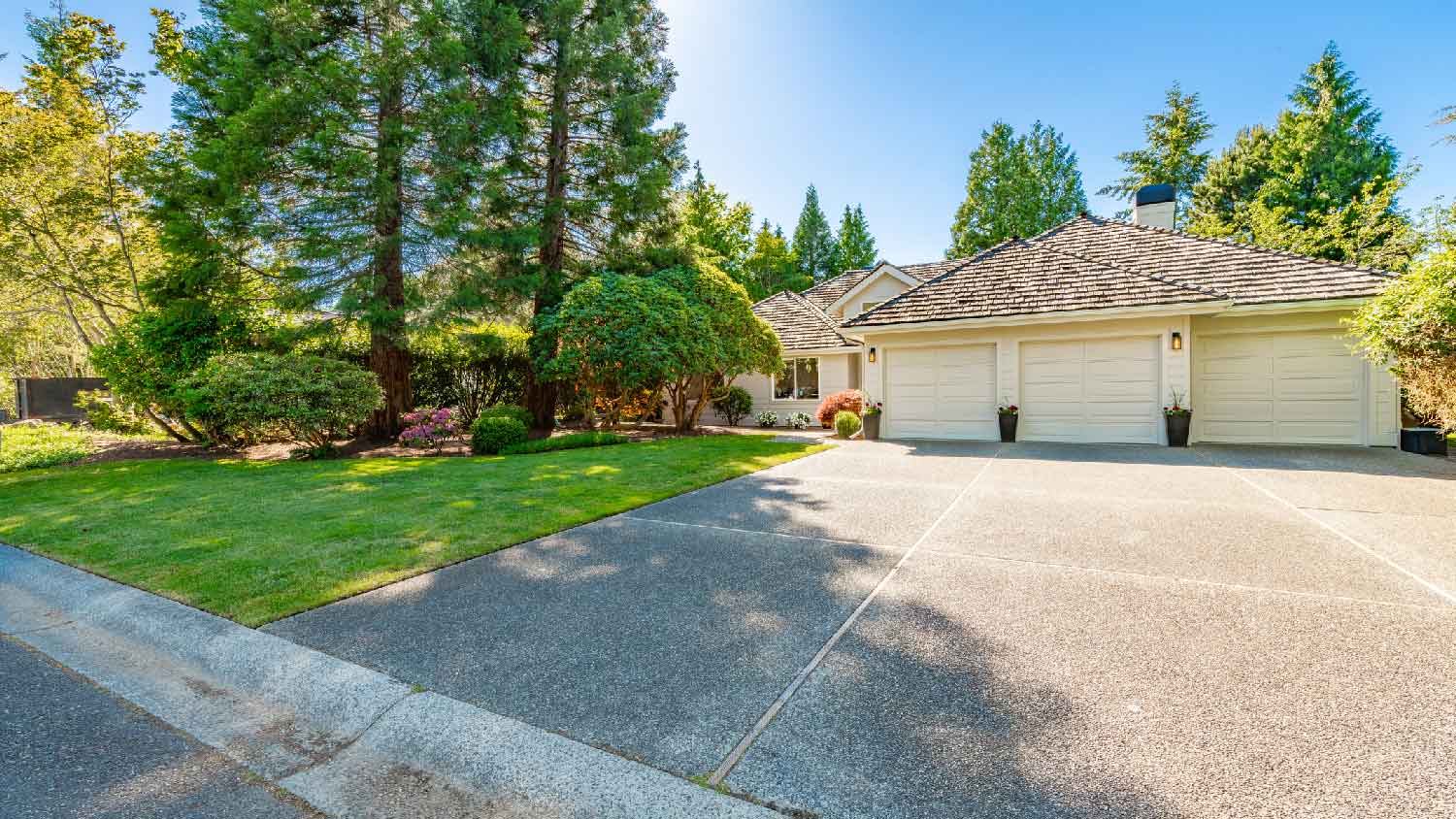The Most Common Garage Door Opener Problems and How to Fix Them
Because no one wants to sit in their driveway and push the button repeatedly


Not being able to get your car in (or out) of your garage can be frustrating as a homeowner. Unfortunately, many issues that range in severity can interfere with your garage door opener and make life difficult.
But there’s good news: By starting with the little things—checking batteries, making sure you didn’t recently lose power—and moving to the more complex (fixing sensors) and even dangerous (working with springs), you or a pro can troubleshoot and figure out what’s going on. This guide will walk you through the common garage door problems.
Questions to Ask When Your Garage Door Opener Remote Won’t Work
When garage door remote troubleshooting, it’s easiest to check the little things first. That way, you don’t have to worry about repairing or installing a new garage opener just yet.
Ask questions like:
Is your garage door opener button locked?
Is everything plugged in?
Could the remote need new batteries?
Are you in range of the keypad when pressing the button?
Is the keypad programmed? If you recently lost power, it might need to be reprogrammed or reset.
Wall Switch or Keypad Won’t Work

If you suspect that the opener and keypad both work and have charged batteries, but the antenna still isn’t sending the signal, there are three potential culprits to look into.
Interference, antenna position, and radio frequency all influence the strength of your garage door opener’s signal.
Items in your garage, such as amps, LED lights, TV cables, and battery chargers can interfere with your remote’s signaling power. Try shutting these devices off or moving them to prevent interference.
Some remotes, especially on older garage door opening devices, allow you to switch frequencies. Try changing yours to see if a new radio length helps.
If the door itself won’t move, or the motor sounds like it’s moving but nothing’s happening, you might be able to fix it on your own—even if you don’t know all the parts of your garage.
The two most common fixes for garage doors that won’t open or close are cleaning the photo-eye (the sensor that lines up on the edge of your garage to ensure the door doesn’t close over a person or object) and realigning the tracks and rails.
Make sure the photo-eyes are lined up on both sides of your garage to adjust your garage door's auto-reverse features. Then check all the tracks to see if anything is bent or out of shape. If your garage door is old, rust or buildup on the railing could also be causing friction or impeding its ability to shut. In this case, applying a silicone lubricant might help.
Garage Opens Loudly
Grinding, squeaking, rattling, or screeching noises imply that your garage door opener needs lubrication or a replacement part. Trying lubricant first to see if it helps is a good idea. Silicone or lithium-based lubricants are good options, and you can find them at hardware stores for $5 to $10 per bottle. (Be sure to follow the manufacturer's directions when applying lubricant or working with any parts of your garage door.)
Popping noises could indicate that the torsion springs need work. This job can be dangerous and is best left to a local garage door company to handle. A broken garage spring costs $200 to $300 to replace on average.
Frozen Garage Door

In cold climates, following a few tips to prevent a frozen garage door could go a long way.
For example, replacing the weather seal every couple of years, using salt around the edge of your garage, and removing snow before it turns into ice could help prevent your garage door from freezing. Another solution may be to install a garage heater. There are different types of garage heaters, but you can find a basic electric model for under $150.
Keep in mind, hot weather can mess with the wires in your garage door opener and make life difficult as a homeowner. Try putting a fan in your garage or getting some circulation going to lower the temperature.





- 10 Garage Door Maintenance Tips for Maximum Longevity
- Garage Door Installation Tips Every Homeowner Should Know
- 7 Easy Ways to Troubleshoot Your Garage Door Opener—and Get Going Again
- Why Your Garage Door Won’t Stay Closed and What to Do About It
- How Does a Garage Door Opener Work?
- Why Your Garage Door Is Opening by Itself and What to Do About It
- How Long Can Garage Door Openers Last?
- 11 Essential Tips for Buying a Garage Door
- Garage Door Opener Horsepower: A Complete Guide
- What Are All the Parts of a Garage Door?









